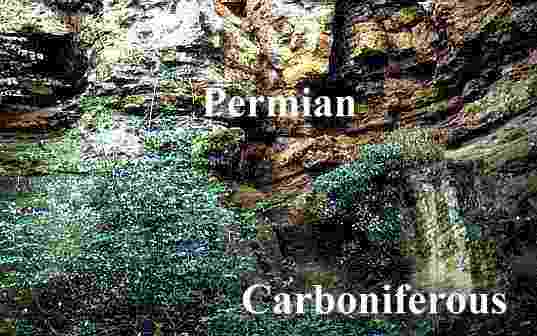Northern
England as a desert and tropical seas. Permian and
Triassic times. 296 to 208 Ma.
|
|
By the early Permian, all the world's continents had converged, becoming
one huge landmass called Pangaea. During late Carboniferous-early Permian
times uplift coupled with a worldwide fall in sea-level led to erosion of up
to 1.300 km. of Carboniferous sediments. Early Permian deposits in Northern
England, therefore, rest unconformably on
Carboniferous rocks. |
|||||||||
|
Later, parts of
Britain were periodically invaded by a sea known as the Zechstein which
extended to Germany. The Zechstein Sea flooded in and evaporated in four
major cycles. It was this sea which laid down the Marl Slate, famous for its
fossil fish, followed by beds of Magnesian
Limestone (dolomite) which are quarried in many parts of Durham. High rates
of evaporation at various levels of the upper Permian resulted in deposits of
gypsum, halite (salt) and potash (carnallite
KMgCl3.6H2O). Some of these minerals are mined at Boulby
and also at Kirkby Thore
near Penrith.
Potash and
salt, Permian evaporates, are mined here. |
|
|||||||||
|
Desert sand dunes overlain by the Marl Slate (marine |
Towards the end of the Triassic, high rates of evaporation returned and
low lying areas such as Cheshire and north east Yorkshire became sabkha environments. (A sabka is a wide area of coastal flats bordering the sea;
the name comes from such an area on certain parts of the coast of Arabia).
Periodic flooding caused by spring tides and strong on-shore winds followed
by intense evaporation results in the precipitation of carbonate-sulphate and
halite deposits. It was in this type of environment that the Mercia Mudstone
Group (formerly Keuper Marl) was deposited. |
|||||||||
|
Thin
section (crossed polars) of Magnesian
Limestone showing concentric ooids of dolomite. |
|





